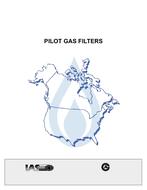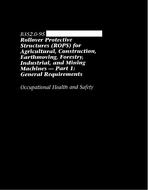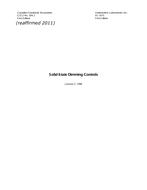Preface
This is the first edition of CSA HPIT 2, Dispensing systems and components for fueling hydrogen powered industrial trucks.
Scope
1.1 This Standard applies to: a) the mechanical and electrical features of dispensers, which includes the control system and any ancillary equipment, used to dispense compressed hydrogen gas for hydrogen powered industrial trucks (HPITs) used for mobility/propulsion in a non-public application; b) systems that refuel hydrogen powered industrial vehicles to a service pressure of 25 and 35 MPa at a refueling rate of no more than 33 g/second. 1.2 The requirements of this Standard are not intended to constrain innovation. When considering fuels, materials, designs, or constructions not specifically dealt with in this Standard, these alternatives are to be evaluated as to their ability to yield levels of safety and performance equivalent to or better than those prescribed by this Standard. 1.3 A hydrogen powered industrial truck (HPIT) is an electric industrial truck that is powered by a fuel cell system. These vehicles include the following: a) electric fork lift trucks; b) airport tuggers; c) yard trucks; d) refrigerated trucks (reefer units); and e) auxiliary power units (APUs). 1.4 This Standard does not apply to dispensers intended for the refueling of automotive vehicles or heavy duty surface vehicles. Note: HPIT dispenser should not be used to refuel vehicles requiring SAE J2601-1 or SAE J2601-2 fueling protocols. 1.5 This Standard does not apply to residential fueling appliances. 1.6 In the case of conflict between this Standard and Federal, Provincial, State, or Local requirements, the governmental requirements take precedence. 1.7 This Standard contains SI (Metric) units with corresponding yard/pound quantities, the purpose being to allow the standard to be used in SI (Metric) units. If a value for a measurement and a corresponding value in other units are stated, the first stated value is to be regarded as the requirement. The given corresponding value may be approximate. If a value for a measurement and a corresponding valve in other units are both specified as a quoted marking requirement, the first stated unit, or both are to be provided. Note: IEEE/ASTM SI 10 or ISO 80000-1 was used as a guide in making metric conversions to yard/pound quantities. 1.8 All references to pressure throughout this Standard are to be considered gauge pressure unless otherwise specified. 1.9 In this Standard, “shall” is used to express a requirement, i.e., a provision that the user is obliged to satisfy in order to comply with the standard; “should” is used to express a recommendation or that which is advised but not required; “may” is used to express an option or that which is permissible within the limits of the standard; and “can” is used to express possibility or capability. Notes accompanying clauses do not include requirements or alternative requirements; the purpose of a note accompanying a clause is to separate from the text explanatory or informative material. Notes to tables and figures are considered part of the table or figure and may be written as requirements. Annexes are designated normative (mandatory) or informative (non-mandatory) to define their application.
Product Details
- Edition:
- 1st
- Published:
- 01/01/2017
- ISBN(s):
- 9781488302244
- ANSI:
- ANSI Approved
- Number of Pages:
- 82
- File Size:
- 1 file , 1.9 MB
- Product Code(s):
- 2424190, 2424190, 2424190


